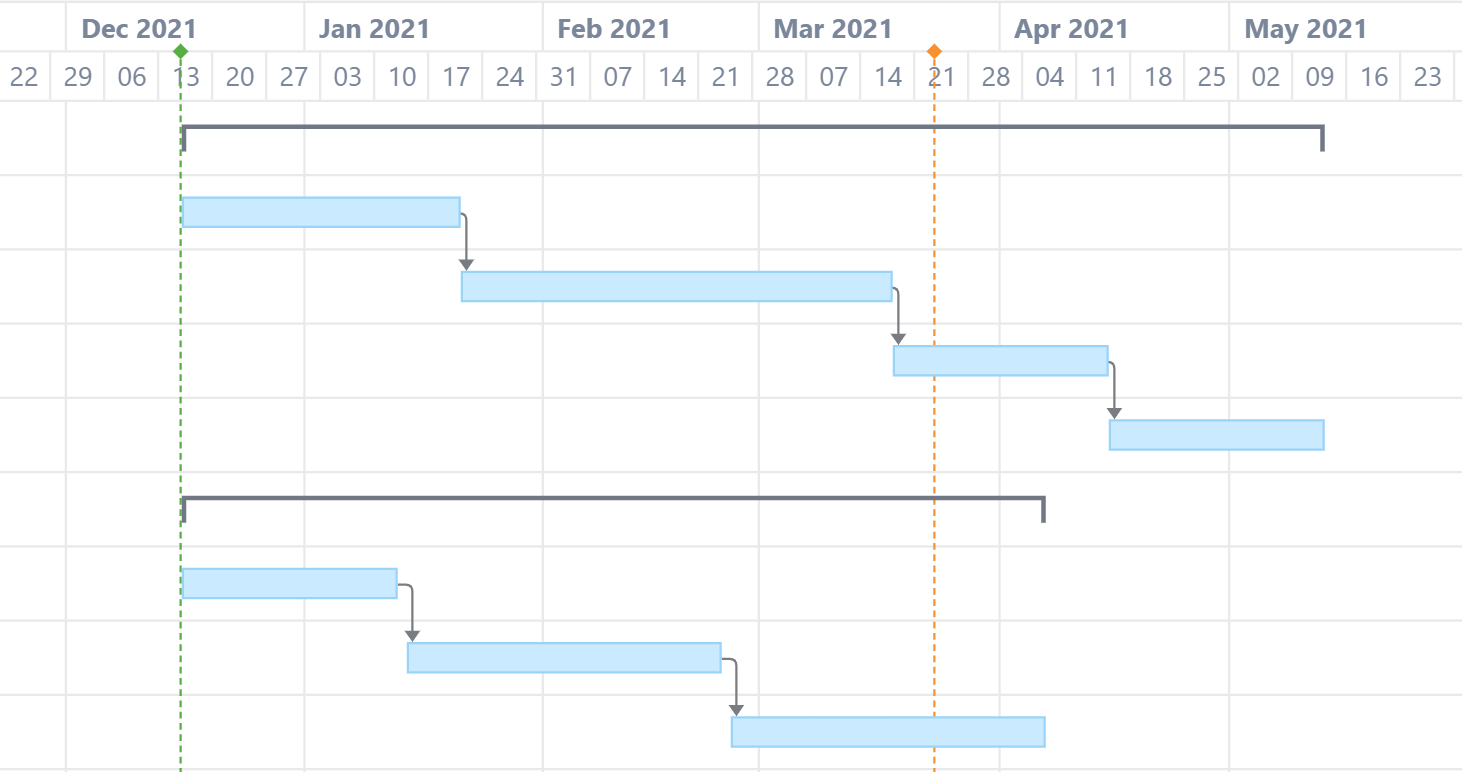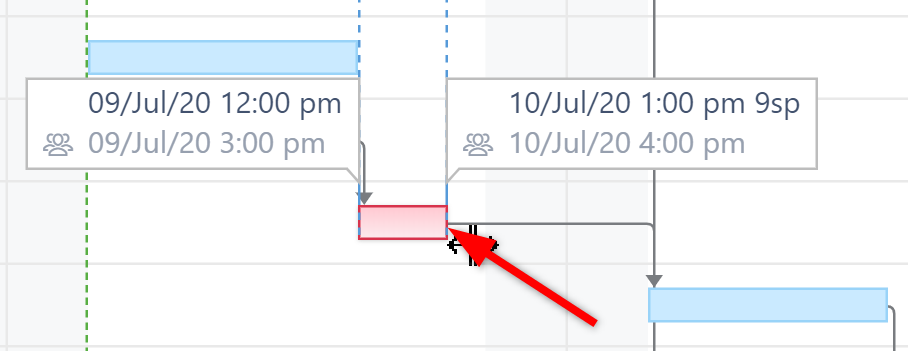The following guide will help you get started working with your Gantt charts. For additional information on the topics discussed, see our Gantt Charts for Structure User's Guide.
Scheduling Tasks
Tasks can be scheduled automatically by Gantt Charts or manually.
Automatic Scheduling
In this mode, tasks are automatically placed on the Gantt timeline based on your project start date, task estimates, predecessors and dependency types.

Manual Scheduling
Manual scheduling allows you to schedule items based on an the values in a Jira field and/or by dragging tasks across the timeline. 
As you set the Start/Finish Date of a task, the task is considered to be scheduled manually. This means it will stay at the defined position regardless of its dependencies. If you remove the Start/Finish Date for a task, it will become automatically scheduled again.
For more information, see Scheduling Tasks.
Adjusting Task Duration
The duration of tasks within the Gantt chart are calculated based on each task's work estimate, the Work Estimates Configuration and the calendar.
To adjust a task's duration:
-
Edit the task's work estimate fields, or
-
Drag the side of the task bar.

For more information, see Adjusting Duration.
Managing Dependencies
Dependencies are defined based on Issue Links. Changing dependencies creates or removes links between issues.

To create a dependency between two tasks, drag from one task to another. The type of dependency you create will depend on the sides of each task you use:
-
Finish to Start - Drag from the right side of one task to the left side of the other
-
Finish to Finish - Drag from right side to right side
-
Start to Finish - Drag from left side to right side
-
Start to Start - Drag from left side to left side
For more information about working with and configuring dependencies, see Dependencies.
Scheduling Conflicts
Gantt Charts highlights any scheduling conflicts with a red line (see picture). For example, for finish to start dependencies, if a task is manually scheduled for a date earlier than its predecessor's Finish Date, Gantt will highlight this conflict.

To deal with the conflict, click the task and select one of the following actions:
-
Resolve > Auto Schedule. This will switch the task to the Automatic Scheduling mode, clearing its Start Date or Finish Date and scheduling the task based on its predecessor and the dependency type.
-
Resolve > Respect Link. This will change the task Start Date to coincide with the predecessor's Finish Date. The task will stay in the Manual Scheduling mode.
-
Ignore. Ignore the scheduling conflict and keep the task in its current location.
Next Steps
Congratulations! You're ready to build your first Gantt chart!
If you run into questions or just want to get a deeper understanding of everything Gantt Charts can do, check out our Gantt Charts for Structure User's Guide.
